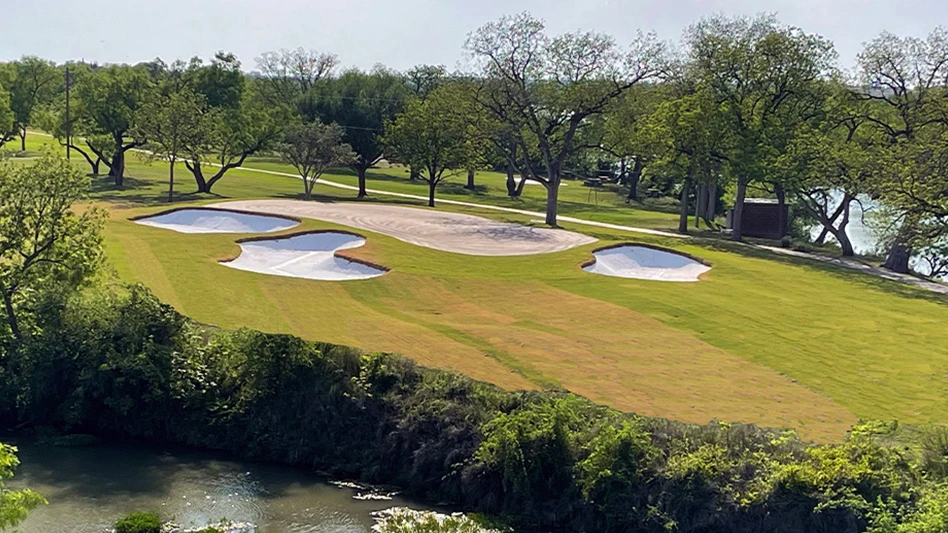Without question, spring golf has to be one of the favorite seasons – especially for the northern market coming out of this year’s brutal winter. Golf clubs are filling up like anthills – diehards are joined by recreationalists at these collection points for the masochistic masses.
For golf courses, springtime first impressions can set the tone for summer traffic. For many turf managers, this is the time to invigorate your turf, while preparing for summer’s challenging conditions. And irrigation plays a critical role in both early spring turf establishment and peak-heat season resilience.
Under summer’s searing stress, an irrigation system needs to be operating at maximum performance. Better to have crews jump on the tune-up process now with a thorough inspection of the irrigation system operating under “normal” conditions. This will help to ensure good performance throughout the potentially stressful growing season.
All over the country, superintendents and irrigation technicians (who are worth their weight in gold, by the way) have made their initial spring system start-up and evaluations, with programmed irrigation schedules to get turf growing. Now’s definitely the time to revisit each zone/sprinkler more intensively, look at system performance in greater detail and correct wayward irrigation operations. Any indication of turf stress this early in the season should be noted – especially around tee boxes and aprons where hot spots tend to surface.
The sprinkler is the most important part of any irrigation system. It flexes the hydraulic muscles. So let’s start at the heads – they’re the most visible and vulnerable part of the system. It’s important that conditions for good sprinkler performance are in place, including the right heads with matched precipitation nozzles as specified in the original design – not replacement heads that don’t match (you know, the one that gets slapped on a zone in the heat of the battle or after an aerification incident).
A good, inquisitive irrigation technician also should be checking for proper pressure at the nozzle; worn or mismatched nozzles; and proper, even head spacing and alignment. With spring rains and emerging growth, the slightest turf discoloration today will only turn ugly later.
Frontline crews should be out activating sprinkler zones and checking the operation of specific components. Pressure at the nozzle is essential to sprinkler performance, and too often ignored. Arm your crews with manufacturer’s specifications for the appropriate sprinkler operating pressure range and a pilot tube (your handy diagnostic tool) with a pressure gauge. Then, under full station flow, have them gauge and record pressure at each nozzle, while looking for worn or damaged parts. This proactive step will save you from scratching your head while looking at dry spots 10 feet from a sprinkler during the summer months.
If pressure is either excessive or inadequate, have the necessary changes made to bring each head back to spec – like moving or removing heads from overburdened zones, or installing pressure regulation at the valve. Pressure regulators can restore hydraulic balance and are pretty simple and relatively non-invasive to install. Easy procedures that improve the performance of individual sprinklers and the overall system are our best opportunities.
Activated sprinklers also should be observed for rotation time – closely matching one another – because crews have already ensured that each head on a zone is of the same make and model. Crews also should be paying attention to any mushy turf around sprinklers for weeping valves or low-head drainage.
Furthermore, they might as well make sure each head is flush and perpendicular to grade, as the slightest disruption from hitting the turf will destroy the best of patterns. Heaved heads invite damage and can require springtime arc adjustment. All of these sprinkler tweaks actively drive accurate precipitation rates – and that’s what it’s all about!
By the end of May, staff should have inspected, detected and corrected sprinkler performance for great springtime conditions and the upcoming summer stress.
Use your crews and get your heads in the game, then plan any major upgrades from there. GCI

Explore the May 2010 Issue
Check out more from this issue and find your next story to read.
Latest from Golf Course Industry
- KemperSports taps new strategy EVP
- Audubon International marks Earth Day in growth mode
- Editor’s notebook: Do your part
- Greens with Envy 66: A Southern spring road trip
- GCSAA’s Rounds 4 Research auction begins
- Quali-Pro hires new technical services manager
- KIOTI Tractor boosts sales leadership, introduces compact loaders system
- Envu adds three new sales managers





